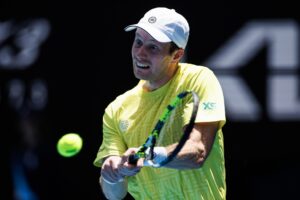Appearance fees are a relatively new phenomenon in tennis, in the sense that tournament organizers and players are just starting to acknowledge that these fees are part of the package. They are a common feature of non-mandatory tournaments; to attract the top players organizers must fork up serious money to get them to play. Yet appearance fees are not published, there is very limited data on them and no required disclosure — so all the figures listed below should be taken cautiously.
One thing I must mention before we start is that despite the equality of Grand Slam purses, other non-mandatory tournaments (that allow appearance fees) don’t offer the same equality. The average WTA international and Premier prize money purse is $440,000 (international prize money average is $282,258). While ATP prize money for non-Masters and Majors is just over $1.1 million.
The known appearance fee knowledge surrounds the big three. Eurosport speculates that Roger Federer pulls the most in appearance fees for non-mandatory tournaments at around $1 million, followed by Nadal and Djokovic at around the $800K mark. This undoubtedly irks the #1 ranked Djokovic.
After that, it becomes unclear. There are reports that to get any ATP player in the top 40 to compete in a 250 and 500 level tournament — appearance fees are a must. This seems suspect, but who knows? One year Monfils asked Basel for $250,000 and was refused. That does not mean they are uncommon amongst the top 40 players. Bautista Agut is reported to frequently receive them at Spanish tournaments, as does Wawrinka in Switzerland. Bigger budget tournaments like Dubai frequently dole out generous appearance fees. This information is based on tips and opinions from tournament organizers and pundits.
There are stories of the Williams sisters garnering appearance fees (Once during an event in Auckland chalking up funding for a $33,000 hotel bill.) Sharapova and Wozniaki receive appearance fees today despite their fall in the rankings. There is limited to no information on anyone else in the WTA top 40 or even top 20.
Perhaps there is the argument against documenting appearance fees. If a music festival wants to book Mariah Carey over Maggie Rodgers it’s going to cost more, even if you think Maggie Rodgers is a better artist. It hast nothing to do with talent, it’s a combination of her brand and the fans she would bring to the event, just like a tennis tournament. So I understand why some might argue it remains separate. Additionally, if you look at some of the events on the WTA tour from the Silicon Valley Open to Wuhan, many are not well attended, even with top names playing. While the top players on the ATP tour have remained mainstays the higher echelons, the women’s side has seen more stars rise and fall. This in part may be the reason for women being offered fewer – and lower — appearance fees.
At the combined Western & Southern event in 2015, Federer and Serena both won; they received about $700,000 and $500,000 respectively. The drastic difference in prize money between the tours, combined with the disparity in appearance fees, leaves female tour players dealing with a steep income gap.
A player’s outgoing expenditures on travel, hotels, board and coaching are gender-blind. Players outside the top 100 barely make a profit. Both tours frequently tout equality at Grand Slams to an annoying degree, but turn a blind eye to the fall-off outside those top tournaments. Gender income equity seems further and further from the case — to the extent that we no longer know by how much.
One thing is clear. The practice of offering appearance fees is significant to a player’s income, and the disparity is at odds with both Tours’ goal of attaining gender income equity. Frankly, it calls for more transparency and disclosure, especially as we are witnessing an evolution in allowing financial remuneration to college athletes. Players have a right to know the truth about their potential income, and so do the fans.
Main Photo:






